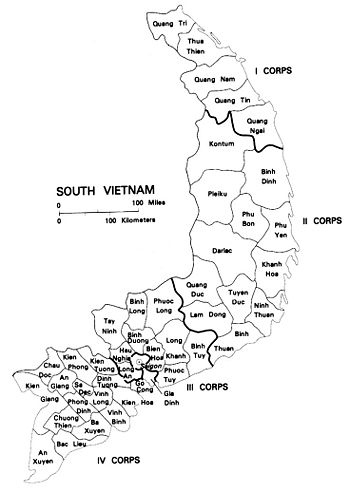III Corps tactical zone: Difference between revisions
Jump to navigation
Jump to search
imported>Howard C. Berkowitz mNo edit summary |
Pat Palmer (talk | contribs) (PropDel) |
||
| Line 1: | Line 1: | ||
{{PropDel}}<br><br> | |||
{{subpages}} | {{subpages}} | ||
Revision as of 14:06, 13 August 2024
| This article may be deleted soon. | ||
|---|---|---|
During the Vietnam War, the III Corps tactical zone (III CTZ)[1] was an Army of the Republic of Viet Nam organization with geographic responsibility for Saigon and 11 surrounding provinces. It had had various earlier names, such as Saigon Military District. The are contained 38 percent of the population and 90 percent of the industry. [2] III CTZ headquarters was at Bien Hoa, a suburb northeast of Saigon. U.S. II Field Force Vietnam (II FFV), its counterpart organization, was based at Long Binh. These headquarters should not be confused with the ARVN Joint General Staff (JGS) and Military Assistance Command, Vietnam (MACV), also in the Saigon area at Tan Son Nhut. III CTZ reported to the JGS; II FFV reported to MACV. References
|
||
